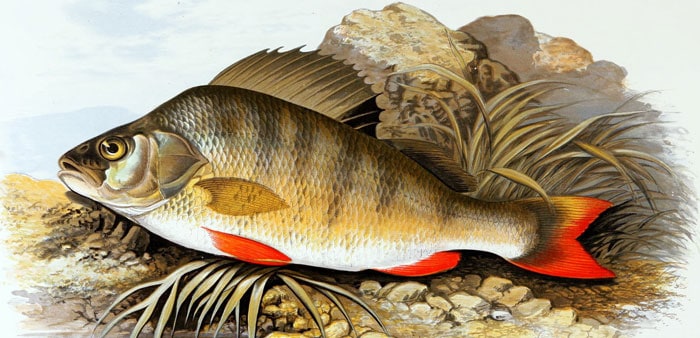New research has identified invasive fish such as trout and eastern gambusia as among the greatest threats facing Australia’s most vulnerable native fish species.
It warns that if current management approaches are continued 22 native Australian fish species are likely to become extinct in the next two decades.
Of the invasive species known to affect Australia’s 22 most at risk native fish species, invasive trout (Salmo trutta, Oncorhynchus mykiss) pose the greatest threat, followed by eastern gambusia (Gambusia holbrooki).
Fourteen of the 22 native fish species at risk are galaxiids, which have been severely impacted by predatory trout introduced into Australia for recreational fishing and which continue to be stocked across the country.
Of the 14 galaxiids, nine were only recognised as species in 2014, with a further four species still to be described. Galaxiids are a small, slender fish sometimes colloquially known as mountain minnows, and Australia has a rich galaxiid fauna with more than 40 species known. They are often the only native fish species present in small mountain streams.
Around two thirds of Australia’s galaxias species are threatened by trout.
The small body size of all but one of the 22 most imperilled fish predisposes them to predation by alien species such as trout.
For the seven non-galaxiids considered in this study, competition/predation by other invasive species such as the sooty grunter Hephaestus fuliginosus, redfin perch Perca fluviatilis, eastern gambusia and two species of tilapia (Oreochromis mossambicus and Pelmatolapia mariae) was identified as a threat.

Two of the three imperilled rainbowfish are threatened by alien species of a different kind: other rainbowfish that have been translocated outside their natural range and which are now hybridising with the threatened species.
Carried out by a team led by Mark Lintermans from the Centre for Applied Water Science at the University of Canberra, the research also identifies climate change and the very small distributions of the most threatened freshwater fish species as the other major threats.

Looking in detail at climate change, the threats are an increase in the frequency or intensity of storms and floods, and drought.
However, the biggest factor affecting the most imperilled freshwater fishes was that almost all of them have suffered range contractions, and now persist only as a few (or in some cases single) small, isolated populations.
This makes them highly vulnerable to a single catastrophic event (e.g. alien trout invasion, fire, or extreme weather) which could rapidly lead to extinction.
These assessments of extinction probability preceded the 2019-20 wildfires, which are likely to have severely worsened the conservation outlook for many of the species considered in the study.
What needs to be done?
- Threat mitigation and recovery actions for many species should commence before they are formally listed as threatened under the EPBC Act, and even before they are formally described.
- The highly imperilled but currently unlisted taxa should be formally listed as threatened under relevant state and federal legislation in order to afford protection to remaining individuals and their critical habitat.
- There is an urgent need to develop a national freshwater fish action plan to coordinate recovery efforts. Further, any update to the national Threatened Species Strategy should include freshwater fishes.
- Completion of the national Freshwater Pest Fish Strategy and adoption as a Threat Abatement Plan will be a crucial and effective step in managing this major threat to Australian freshwater fishes.
- Climate change was another major threat affecting all 22 species. A national framework and funding to address climate-related threats is also urgently required.

Monitoring our fish
The Australian Society for Fish Biology has been monitoring the status of threatened freshwater fish since 1985 and in 2019 conducted a national review of the conservation status of Australian freshwater fish for the IUCN Red List. This review, along with other information, identified approximately 114 threatened taxa and an additional 20 taxa considered ‘near threatened’(Lintermans unpubl. data).
This means that about 40% of Australian freshwater fish are threatened with extinction, although sadly only 38 of these are actually listed as threatened under the Environment Protection and Biodiversity Conservation (EPBC) Act. Nineteen of the 22 most at risk species are not listed under EPBC Act.
Freshwater habitats are arguably the most imperilled globally, and suffer from fierce competition for water from industry, domestic uses, agriculture, hydroelectricity and recreational needs.
Freshwater is extremely limited — about 3% of the water on earth is fresh and approximately 0.29% of global freshwaters are liquid (i.e. not frozen in polar ice caps) and available for most fishes. Yet amazingly freshwater fishes are the largest vertebrate group on the planet, composed of about 17,750 species.
An arid continent, Australia has around 315 freshwater fish species. Unlike birds and mammals, new Australian freshwater fish species are regularly ‘discovered’ and described and yet it is estimated that around a third of our freshwater fish are currently not named. This is largely because of ‘cryptic diversity’ withing existing named taxa (i.e. a named species may in fact consist of many cryptic species).








